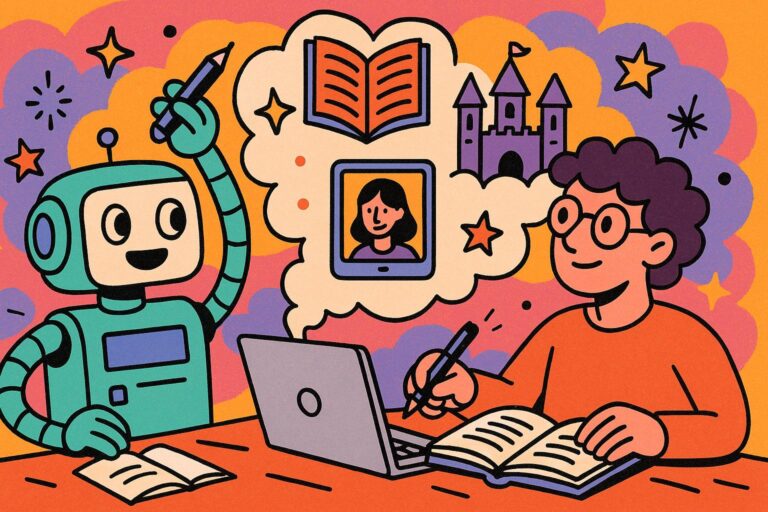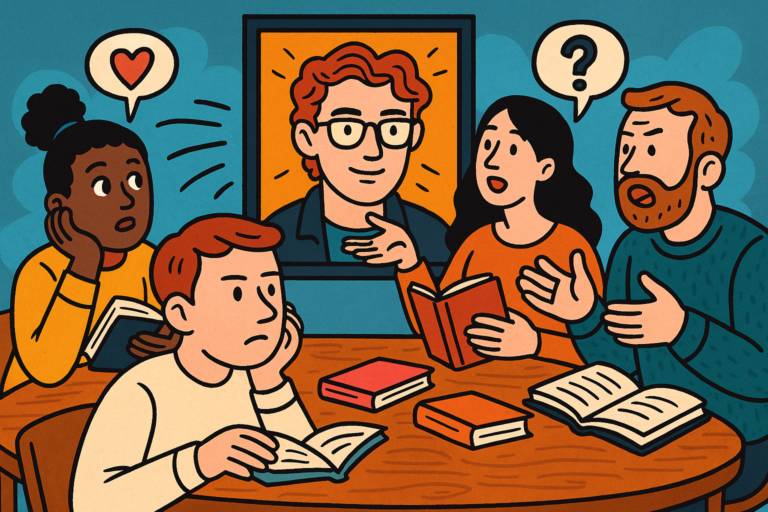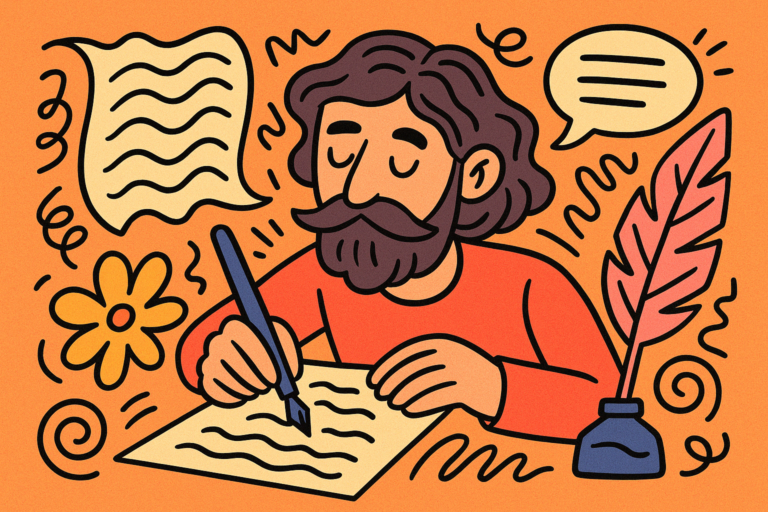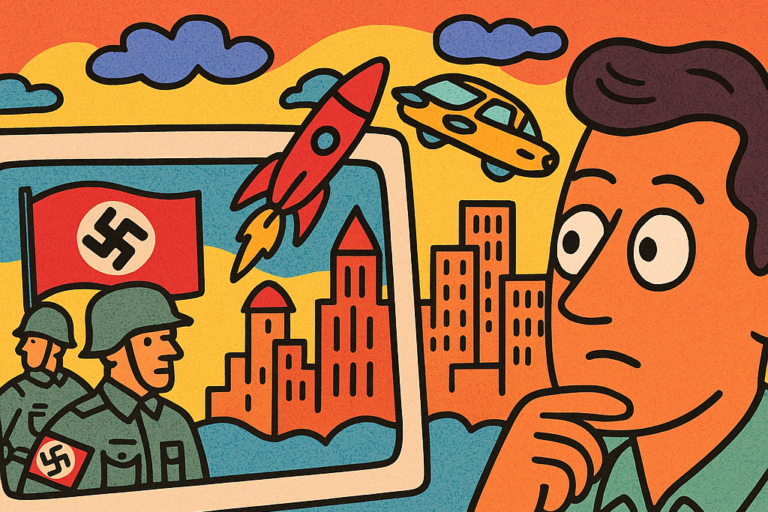How Our Imagination While Reading Outperforms Special Effects While Watching A Movie
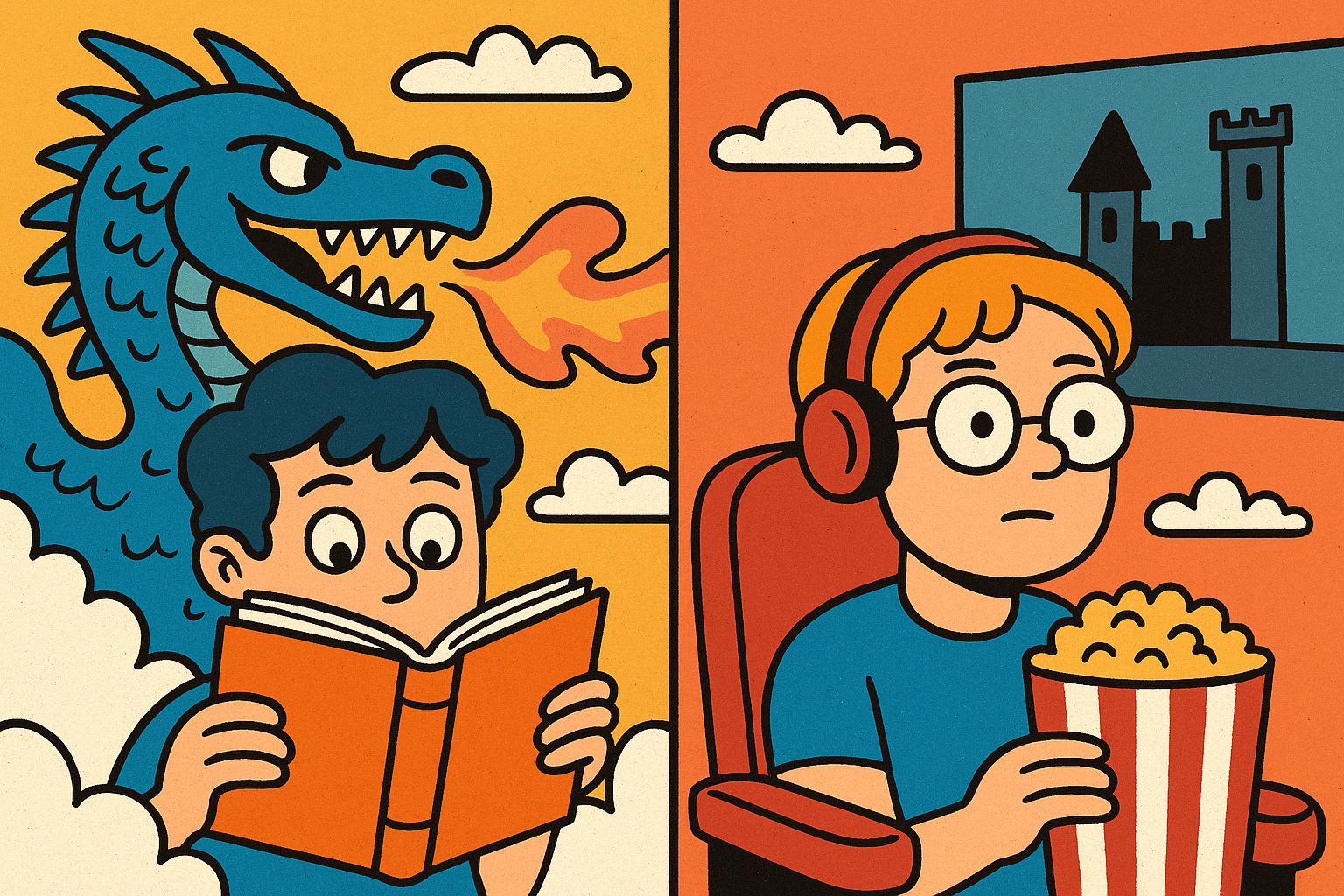
When we talk about immersion, most people immediately think of a big screen, surround sound, and VFX so realistic you can see every pore on a dragon’s face. But here’s the twist: for all the spectacle cinema offers, it still can’t compete with the sheer power of what happens in our minds when we read.
This isn’t just nostalgia for books or some pro-literature bias. It’s something I stumbled across while digging into how the brain responds differently to stories we read versus those we watch.
And it turns out, reading isn’t a passive activity at all—it’s a co-creative act. You’re not just receiving a story; you’re building it, live, using every corner of your imagination.
So in this post, I want to explore how our minds go above and beyond Hollywood, especially when we’re left to fill in the blanks ourselves. And trust me, the neuroscience is wild.
The Neurological Edge of Reading
Okay, so here’s where it gets really interesting. When you’re reading, your brain isn’t just decoding symbols on a page—it’s constructing an entire multi-sensory world in real time. I didn’t expect to get this deep into neuroscience when I started researching, but once you go down this rabbit hole, there’s no going back.
Researchers like Stanislas Dehaene and Maryanne Wolf have shown that reading activates not just the visual cortex, but also the auditory, motor, and even olfactory centers of the brain.
So when you read a line like “she cradled the steaming mug of cinnamon coffee,” your brain lights up as if you’re smelling that coffee and feeling the warmth in your hands. That’s called embodied simulation—and it’s a big deal.
Compare that to watching a film scene where someone’s holding a cup. Sure, you see it—beautifully lit, maybe even slow-mo—but you’re not simulating it. You’re observing. The brain’s response is more passive. You’re following, not creating.
Even more fascinating is how reading engages the default mode network—that part of the brain involved in daydreaming, introspection, and mental time travel.
This network kicks into gear when we imagine things that aren’t physically present, like what a character might be thinking or feeling beneath the surface of their dialogue.
In film, the camera often tells us where to look, how to feel, what the character’s face is doing. With books, it’s up to us to infer. And that inferential leap? It’s cognitively demanding and incredibly rich.
Here’s a great example: in Toni Morrison’s Beloved, the prose is fragmented, nonlinear, emotionally dense. Your brain has to work to piece together time, memory, trauma. That complexity activates a wide neural network because you’re constantly interpreting meaning, not just absorbing it.
Or take House of Leaves by Mark Z. Danielewski. The layout of the book itself—text spiraling, mirrored, or printed in strange patterns—forces your brain to navigate space as a metaphor, a psychological maze that a camera could never replicate without killing the whole point. Reading it becomes a spatial and emotional puzzle your brain solves on the fly.
And here’s the kicker: even silent reading activates the auditory cortex. You “hear” the voice of the narrator in your mind, which means you’re actually doing low-level sound processing without any real sound. That’s wild, right?
So while movies offer the finished product, reading is the blueprint that your brain builds into a world of its own. It’s active. It’s generative. It literally changes how we think.
And for experts like you, I’d argue this: the more abstract the text, the more our minds engage—and the more vivid the resulting internal experience becomes. That’s something no amount of CGI can touch.
Limits of the Screen vs. Infinite Internal Cinema
Let’s talk about the real headliner: the imagination.
If you think of your mind as a cinema, then reading is the ultimate IMAX. Except it doesn’t have walls, budget constraints, or runtime limitations. It’s the only theater in the world where the audience is also the director, set designer, and actor—all at once.
Now, I’m not knocking special effects.
I love a good slow-motion spaceship shot as much as the next sci-fi nerd. But when we start comparing what the imagination does during reading to what a movie gives us already made, the gap is pretty staggering. Here’s why.
1. Personalization of Visuals
Every reader builds a world that no one else can fully replicate—and that’s part of the magic.
When you read something like, “He had eyes like storm clouds,” you’re not pulling up a stock image. You’re referencing your version of storm clouds. Are they dark and ominous? Light and electric? Do they remind you of a specific childhood memory or a time you felt anxious?
That personal context rewires the meaning of every sentence. In contrast, a film gives you one face, one room, one version of a storm—and sure, it might be beautifully shot, but it’s a closed interpretation. It tells you what the world looks like, and your brain goes, “Okay, noted,” instead of, “Let’s create.”
The brain loves to customize. It thrives on it. In fact, studies in cognitive psychology (like the work of Raymond Mar) show that readers mentally simulate not just settings, but entire emotional atmospheres based on past experiences. That level of interiority just doesn’t happen when visuals are pre-rendered.
2. Unbounded Scale and Detail
Try this: picture an endless city suspended above a desert, stitched together with bridges made of living bone.
Weird, right? But you saw something, and you didn’t need $200 million in VFX or a team of render artists to do it. Your mind built that entire image in a blink. And it’ll look different for everyone.
This is where reading absolutely stomps on special effects. Even the best CGI has limitations—budget, processing power, run-time, and realism expectations. But the imagination? It’s real-time, infinite-resolution, surreal-capable. You can zoom in on the dust motes or out into the stratosphere, no rendering time required.
And here’s the kicker: your brain doesn’t just build it—it believes it. Thanks to mirror neurons and sensory simulation, the imagined feels real enough to matter. You’re not watching magic; you’re conjuring it.
3. Temporal Fluidity
Books let you play with time like a DJ with a beat pad.
You want to re-read that devastating breakup scene five times because it emotionally wrecked you?
Done.
Want to speed through the exposition and get to the part where the murder mystery twists on itself?
Go for it.
You’re in control.
Movies can’t offer that.
They’re linear by nature—start to finish, 24 frames per second. And while some films play with time (think Inception or Memento), it’s still their timeline, not yours.
Reading invites you to dilate or compress time based on emotion, curiosity, or even mood.
That freedom to manipulate pace deepens the cognitive and emotional engagement, because now you’re not just watching a story unfold—you’re actively choosing how to experience it.
4. Emotional Depth from Ambiguity
Here’s a hot take: ambiguity is an emotional supercharger.
Film is inherently specific. If an actor cries, we see tears. If there’s a twist, it’s revealed with a music cue and a reaction shot. There’s not a lot of room for “what does this really mean?”
But the written word? It thrives on ambiguity. You might read a character’s reaction as grief, while someone else reads it as guilt. That space for interpretation creates a participatory experience—you’re not just processing a story, you’re arguing with it internally.
This is where literary fiction often leaves film adaptations feeling flat. So much of the power comes from what’s not said.
Authors like Kazuo Ishiguro (The Remains of the Day) or Jhumpa Lahiri (Interpreter of Maladies) specialize in this kind of emotional suggestion. Your brain has to fill in the gaps, and that makes the emotional payoff way more personal—and often, more intense.
5. Multisensory Synthesis
The mind doesn’t just visualize when you read—it simulates. That’s a huge distinction.
Reading the word “crunch” doesn’t just trigger a mental sound effect—it might feel like biting into a chip. Words like “velvet” or “brine” trigger texture, temperature, even taste.
Neuroscience calls this cross-modal processing. It’s like your senses are playing jazz together in your head. In film, you get visuals and sound—maybe some music to manipulate mood—but it’s still external. With reading, the simulation comes from inside, blending all five senses (and sometimes a sixth).
So yeah. CGI can render dragons. But it can’t render the feeling of flying one.
When Movies Do Try — and Still Fall Short
Let’s give movies some credit—they’ve definitely tried to match the immersive complexity of literature. Some directors come close. Some even do something entirely new and brilliant.
But when it comes to replicating the imaginative experience of reading, film almost always stumbles in at least one key area: interiority, ambiguity, or participatory meaning-making.
Let’s unpack a few examples.
Dune: Herbert vs. Villeneuve
Frank Herbert’s Dune is practically a masterclass in unfilmable literature. It’s dense, philosophical, filled with inner monologues, political nuance, and metaphysical exploration. When Denis Villeneuve adapted it, he absolutely nailed the visual world—Arrakis looked exactly how I imagined it… but also nothing like it.
The problem? You can’t film a character’s internal struggle with messianic guilt, not without endless exposition or voice-over. Paul Atreides in the book is a contradiction—terrified of power, yet drawn to it. In the movie, he mostly stares moodily into the sandstorm.
It’s beautiful. It’s powerful. But it’s not participatory in the same way. The experience is curated, not co-created.
The Lord of the Rings: Tolkien vs. Jackson
Peter Jackson’s trilogy is iconic. But even it had to make trade-offs. The books are full of moments where time seems to stretch or shrink based on the character’s internal state—think Frodo’s slow psychological unraveling or the ethereal vagueness of Lothlórien.
In the films, pacing is externalized. We see action, not contemplation. Characters become plot devices rather than fully lived minds, especially in the extended battle scenes.
Plus, Jackson’s visual interpretations overwrite your own. Once you’ve seen Viggo Mortensen’s Aragorn, it’s hard to go back to your Aragorn—who might’ve been grizzled, scholarly, or even, weirdly, blond.
The Road: McCarthy vs. Hillcoat
Cormac McCarthy’s The Road is minimalist, internal, almost dreamlike in its despair. In the book, the horror is existential—it’s in the silences, in what isn’t described. The lack of punctuation, the sparse dialogue—it creates a feeling of vast psychological space.
John Hillcoat’s film adaptation?
It’s fine. But it ends up literalizing things that should’ve stayed ambiguous. You see the world falling apart instead of feeling it. The grimy faces, the empty highways—they’re bleak, but somehow less haunting than a single McCarthy sentence: “Each the other’s world entire.”
What Cinema Can’t Replicate (But Reading Can)
- Interiority
Films rarely give us access to thought. Even when they try, voice-over narration usually feels clunky or overly explanatory. - Ambiguity
Movies thrive on clarity. Too much ambiguity, and the audience checks out. Books? Ambiguity is often the main event. - Co-creation
With reading, you’re a partner in building the world. With film, you’re a passenger. A very entertained one—but still a passenger.
Where Film Succeeds—But Still Under Reader Control
- Tone & Atmosphere
Directors like Lynne Ramsay or Terrence Malick use sound and color to build emotional landscapes. That’s a strength film has that books can’t match directly. - World-Building
Sci-fi and fantasy benefit from film’s ability to show scale. Think Blade Runner 2049 or Avatar—you get a tangible sense of place.
But here’s the twist: even when done perfectly, those cinematic experiences are still filtered through the imagination of the filmmaker—not yours.
Final Thoughts
The imagination wins—quietly.
So yeah, movies are impressive.
But reading?
Reading invites you to become something more than an audience. It asks you to build, to interpret, to feel more deeply and more personally. It’s infinite, internal, and entirely yours.
The next time someone talks about “immersive” storytelling, maybe remind them: the most powerful special effects in the world still live inside your head

